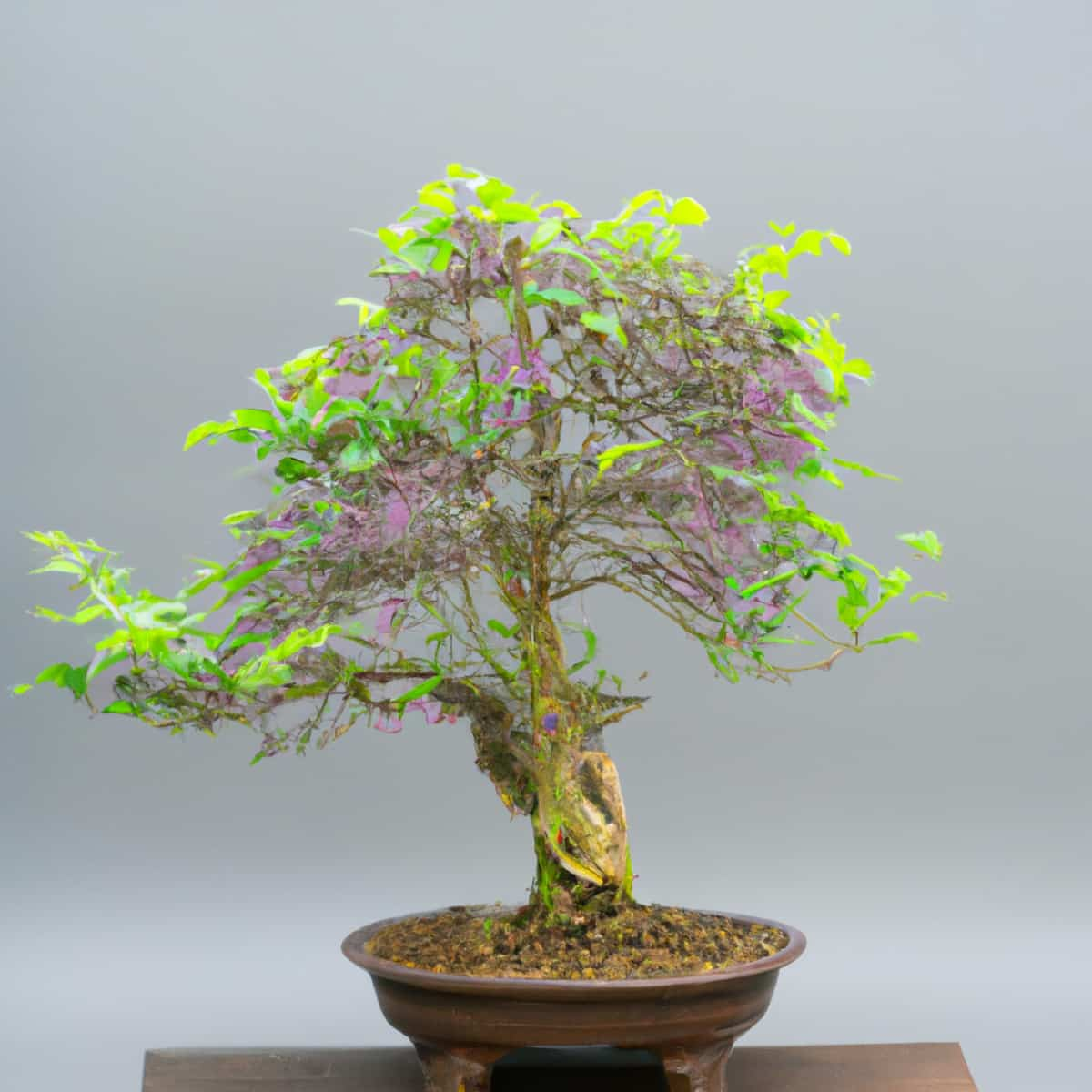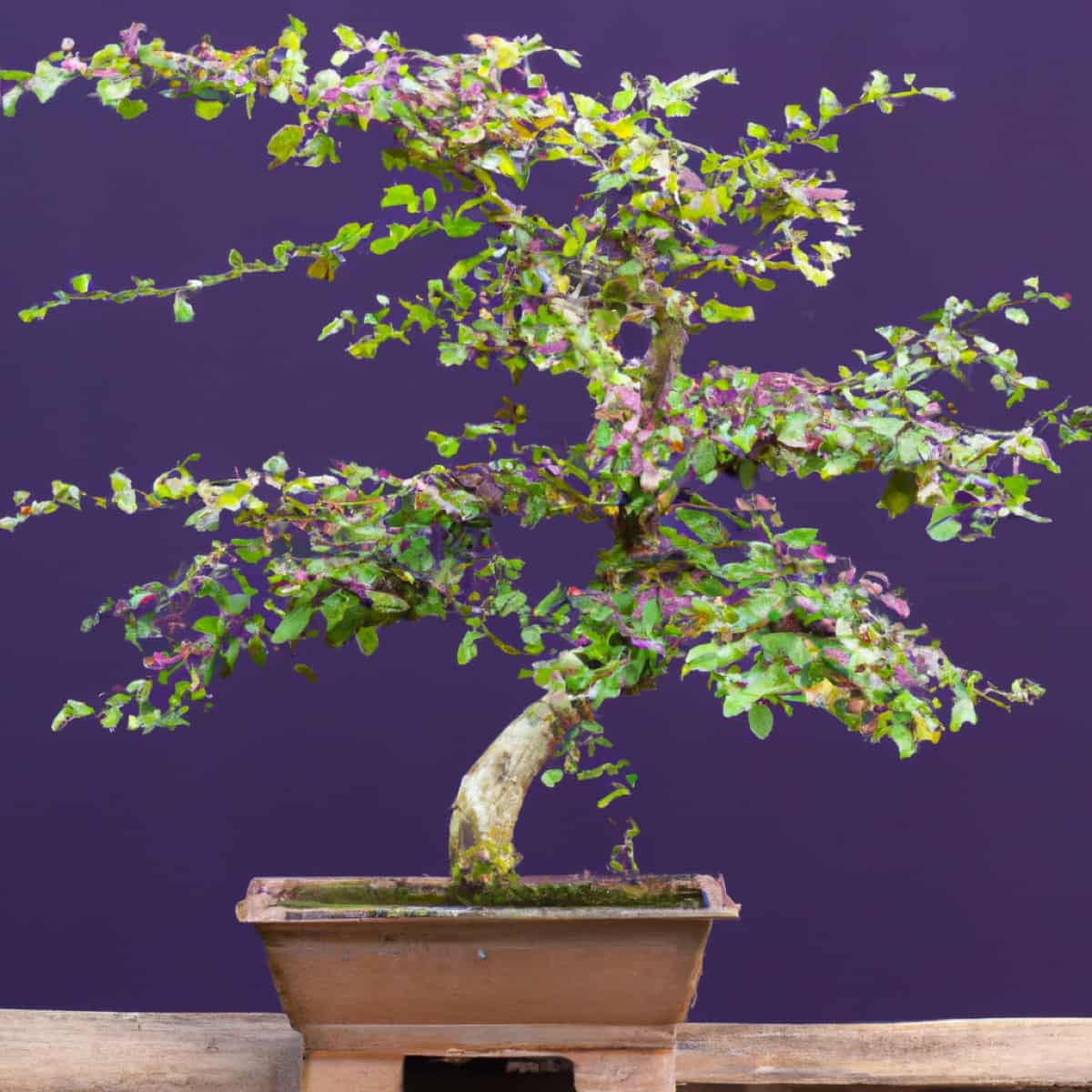The art of Bonsai brings together horticultural precision, aesthetic sensibility, and patience in a deeply rewarding pursuit. Originating in China and Japan, this ancient tradition of immense global appeal has spread worldwide. Among the variety of plants that can be grown as Bonsai, the Callicarpa Japonica, or Japanese Beauty Berry as commonly known, stands out as an attractive choice.

With its vibrant purple berries, this Best Indoor Flowering Bonsai adds a unique flair to any indoor garden. Additionally, it’s a relatively easy Flowering Bonsai for Beginners due to its resilience and low maintenance needs. This comprehensive guide will outline the key steps for planting, growing, and caring for your Bonsai Callicarpa Japonica.
How to Grow and Care for Callicarpa Japonica Bonsai
Choosing the Right Bonsai Callicarpa Japonica Tree
In the beginning, your journey into the world of Bonsai starts with choosing the right tree. One thing to keep in mind is the age of the tree. Bonsai practitioners often select younger trees as they’re more malleable for training. When choosing your Bonsai Callicarpa Japonica, look for a healthy specimen that exhibits vibrant green leaves and a sturdy trunk. Remember, the appearance of the tree you choose today will dramatically transform with careful cultivation over the years.
Preparing the Soil for Bonsai Callicarpa Japonica
Once you have selected your tree, the next step is to prepare the soil. Bonsai soil is quite different from your average garden soil. It must provide the perfect balance of drainage and water retention for the roots. Callicarpa Japonica does well in a soil mixture of Akadama, pumice, and organic potting compost. These components ensure good drainage while retaining sufficient moisture and nutrients. Be aware that the soil’s composition can vary based on the local climate and the specific needs of your Bonsai.
Planting Bonsai Callicarpa Japonica Tree in a Container
The actual planting process begins with the container. Select a pot that provides enough space for your Bonsai roots to grow. However, avoid choosing a pot that’s too large, which could lead to waterlogging. Once your soil mixture is placed into the container, position your tree and fill it to the rim, ensuring the roots are well covered. Afterward, gently tamp down the soil to remove any air pockets.
Watering Techniques for Bonsai Callicarpa Japonica
Watering becomes your most vital task once your Bonsai Callicarpa Japonica is planted. While watering frequency can depend on factors like temperature, humidity, and the size of your tree and pot, a good rule of thumb is to water when the top layer of soil feels dry. But remember, overwatering can be as harmful as underwatering, leading to root rot. Therefore, it’s important to develop and stick to a regular watering routine.
Fertilizing Bonsai Callicarpa Japonica Tree
Apart from water, your Bonsai Callicarpa Japonica will also require nutrients to thrive. Regular fertilizing ensures your tree gets these necessary nutrients. Use a well-balanced Bonsai fertilizer with equal parts Nitrogen, Phosphorous, and Potassium. The application frequency can vary depending on the tree’s growth stage and the time of year. As a general guideline, fertilize your Bonsai once a month during the growing season and less frequently during winter.
In case you missed it: How to Grow and Care for Blueberry Bonsai: Planting, Pruning, and Repotting

Pruning and Shaping Bonsai Callicarpa Japonica
Pruning and shaping are key aspects of Bonsai art, crucial for maintaining the desired miniature size and cultivating an aesthetically pleasing form. Use a sharp pair of Bonsai scissors for precision for your Bonsai Callicarpa Japonica. Begin by pruning the tree’s crown to define its shape, then remove any unnecessary branches. The goal is to create an even distribution of branches around the trunk. Remember, patience is vital in this process. Overzealous or rushed pruning can harm your tree.
Protecting Bonsai Callicarpa Japonica From Pests and Diseases
Bonsai Callicarpa Japonica, like all plants, can become a target for pests and diseases. Regular checks for signs of pests or diseases can help catch any problems early. Common pests to look out for include aphids and scale insects. If you identify a pest infestation, use a mild insecticide. As for diseases, fungal infections are the most common. These can be prevented by avoiding overwatering and ensuring your Bonsai is placed in a well-ventilated area.
Providing Adequate Sunlight for Bonsai Callicarpa Japonica
Sunlight is another critical component for your Bonsai’s health and growth. While Bonsai Callicarpa Japonica can tolerate some shade, it prefers a position with plenty of indirect sunlight. This promotes growth and ensures the production of the plant’s signature purple berries. However, avoid exposing the plant to harsh direct sunlight, especially during the hotter parts of the day, as this can scorch the leaves.
Maintaining Temperature and Humidity for Bonsai Callicarpa Japonica
Bonsai Callicarpa Japonica prefers a temperate climate, similar to its native environment in Japan. It can tolerate various temperatures, making it a great indoor plant. However, avoid exposing it to temperatures below freezing, which can cause damage. As for humidity, Bonsai Callicarpa Japonica prefers a moderately humid environment. If the indoor air is too dry, consider placing your Bonsai on a humidity tray or regularly misting it to maintain humidity levels.
Repotting Bonsai Callicarpa Japonica Tree
Finally, repotting is a crucial step in Bonsai care, essential for maintaining the health of your tree’s root system. For your Bonsai Callicarpa Japonica, repotting should be done every two to three years. This process involves carefully removing the tree from its pot, pruning the roots back, and replanting it in fresh soil. Repotting allows your Bonsai to continue growing healthily and ensures its longevity. Remember, the repotting process can cause stress to your tree, so it should be done during the dormant period, usually in early spring or late winter.
Monitoring Growth of Bonsai Callicarpa Japonica
To ensure your Bonsai Callicarpa Japonica continues to thrive, you must closely monitor its growth. This involves observing your plant regularly, noting any changes in the leaf color, the state of the berries, or the tree’s general health. Check the trunk and branches for signs of stress, like bark peeling or unusual markings.
Understanding your Bonsai’s growth cycle and responding accordingly allows you to intervene if any problems occur, ensuring the long-term health and beauty of your Japanese Beauty Berry Bonsai. Remember that while the Bonsai Callicarpa Japonica is relatively resilient, it’s not immune to difficulties, so staying attentive to its condition is paramount.
In case you missed it: How to Grow and Care for Tamarind Bonsai: Planting, Pruning, and Repotting

Conclusion
Cultivating a Bonsai Callicarpa Japonica is a fulfilling and engaging pastime combining creativity and botanical knowledge. Following the outlined steps and techniques ensures your Japanese Beauty Berry thrives, bringing you years of enjoyment from this Best Indoor Flowering Bonsai. Whether you’re a beginner or an experienced Bonsai enthusiast, nurturing this captivating miniature tree will surely captivate and inspire.
- Ultimate Guide to Ossabaw Island Hog: Breeding, Raising, Diet, and Care
- Ultimate Guide to Juliana Pig: Raising Facts, Size, Diet, Care, and Lifespan
- Raising Lleyn Sheep: Disadvantages, Price, Uses, Characteristics, and Care
- Ultimate Guide to Meishan Pig: Breed Facts, Breeding, Raising, and Care
- Ultimate Guide to Teacup Pigs: Raising, Diet, Lifespan, Cost, and Care
- Guide to Raising Poll Dorset Sheep: Facts, Profile, Characteristics, Uses, and Care
- Ultimate Guide to Bighorn Sheep: Characteristics, Diet, Lifespan, Breeding, and Lifecycle
- Ultimate Guide to Raising Katahdin Sheep: Farming Facts, Breed Profile, Uses, and Care
- Ultimate Guide to Raising Oreo Cows: Belted Galloways Farming Facts, Profile, Uses, and Care